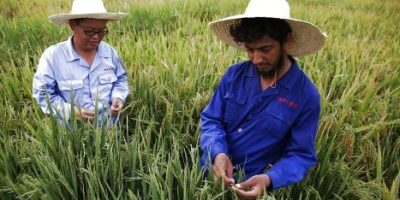Sino-Pak coop on cotton germplasm of great pith and moment: Chinese scholar

BEIJING, JULY 14 – The cooperation between China and Pakistan in the collection and identification of cotton germplasm resources is of great pith and moment,” said Prof. Du Xiongming, Director of Cotton Germplasm Resources Division, Institute of Cotton Research (ICR) of Chinese Academy of Agricultural Sciences (CAAS).
” For now the two countries have exchanged over 300 cotton germplasm resources, China Economic Net reported on Tuesday quoting Dr. Du.
As per Prof. Du, China and Pakistan have been co-working for many years in the field of collecting and identifying cotton germplasm resources.
ICR has joined hands with Cotton Research Institute (CCRI), Multan, University of Agriculture Faisalabad (UAF) and some other universities and scientific research institutions to identify cotton germplasms’ resistance to heat, drought, diseases and insect pests in different places and environments, and jointly published scientific research papers on that.
In addition, through the Industry-University-Research (IUR) cooperation, ICR has been devoted to the training of talented Pakistanis in the field of basic cotton research.
Prof. Du’s laboratory has trained 11 Pakistani doctoral students (including 5 graduates), 2 postdocs and 2 visiting scholars so far.
Cotton germplasm resources are the material basis of basic and applied research of cotton. “Pakistan’s Asiatic Cotton (G. arboreum) is different from China’s Gossypium hirsutum Linn in term terms of genetic characteristics.
China’s cotton is known for its high yield, high quality and precocity, while Pakistan’s cotton is famous for its resistance to heat, drought, saline-alkali and Cotton Leaf Curl Virus (CLCV),” noted Prof. Du, who received China’s National Award for Excellence in Innovation in May.
He is of the view that the cooperation between China and Pakistan in the collection and identification of cotton germplasm resources is of great pith and moment.
According to Prof. Du, the prevention and control of many major diseases and insect pests are very much related to the research of germplasm resources. For example, that in Asia and Africa the major disease of cotton is caused by CLCV, and this virus devastated the Pakistan cotton industry in early 1990s where it caused an estimated yield reduction of 30-35%.
If Asiatic Cotton (G. arboreum)’s genetic characteristics of resistance to CLCV can be transferred into Gossypium hirsutum Linn. via distant hybridization, the problem caused by CLCV that has troubled Pakistani cotton farmers for many years will be solved.
Being in the industry for over 30 years, Du has published 39 SCI papers in the journal Nature Genetics as the first or corresponding author. “Compared with Pakistan, China’s germplasm resources research is more comprehensive and systematic, and has advanced from phenotypic identification to genotypic identification,” he mentioned. ad
The ICR will further deepen cooperation with Pakistan in the field of cotton germplasm resources and breeding, so as to promote the development of the cotton industry and personnel training for both countries, he added.
Related News

AZAL’s direct flights usher in new era of connectivity between Azerbaijan, Pakistan
KARACHI, APR 19 /DNA/ – The Ambassador of the Republic of Azerbaijan to the IslamicRead More

China Exports Drop More Than Expected in Setback to Recovery
Islamabad, Apr 12 (DNA): Experts lauded China’s role in advancing Hybrid Rice cultivation in Pakistan,Read More


Comments are Closed